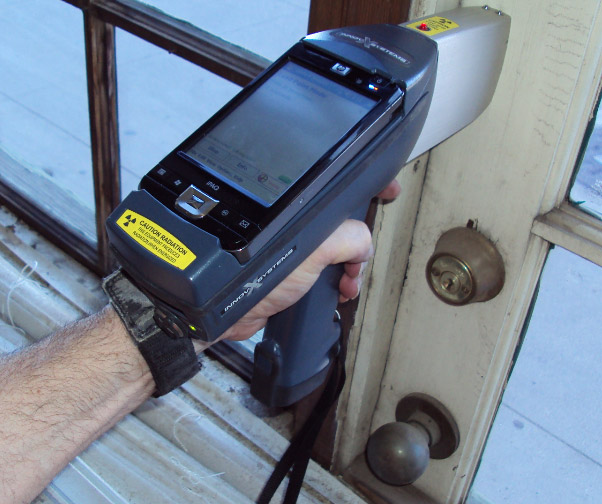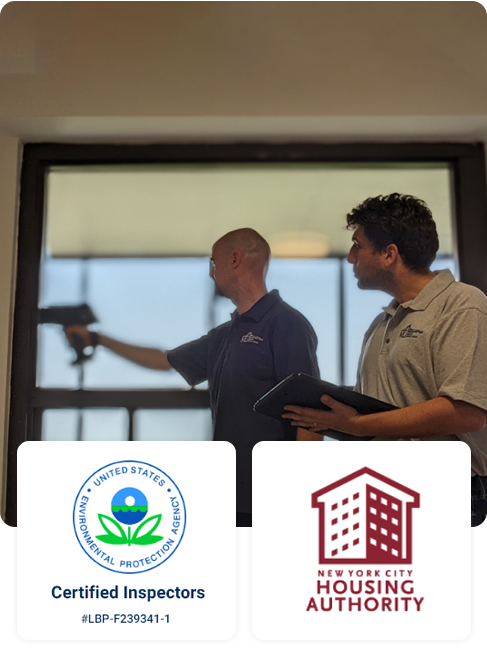NYC Lead Paint Removal Company-- Guaranteeing Safe and Lawful Compliance
NYC Lead Paint Removal Company-- Guaranteeing Safe and Lawful Compliance
Blog Article
Step-by-Step Refine for Effective Lead Offense Remediation
Following this, adherence to government and state regulations is extremely important to creating an efficient removal strategy. The actual remediation calls for knowledgeable employees to execute these strategies while purely following safety and security procedures. What occurs after the removal is completed?

Discovery and Analysis
Detection and evaluation are essential action in the removal of lead infractions. To ensure a reliable remediation process, it is important to carry out a thorough assessment of the setting where possible lead exposure exists. The first stage of discovery entails determining resources of lead contamination, which can be discovered in paint, water pipes, dirt, and dirt. Utilizing innovative diagnostic devices such as X-ray fluorescence (XRF) analyzers and atomic absorption spectroscopy (AAS) can provide specific measurements of lead concentrations.
This includes examining the degree and severity of contamination, as well as recognizing populaces at danger, especially youngsters and expectant ladies. The collected data must be diligently recorded to support the development of an effective removal strategy.
Additionally, it is essential to prioritize areas with the highest degree of contamination and those that posture the best health and wellness threats. Effective interaction with stakeholders, including building owners, locals, and public wellness officials, is critical for guaranteeing that all celebrations are educated about the findings and the subsequent actions needed for remediation. This initial discovery and analysis phase lays the groundwork for a successful lead violation removal procedure.

Lawful and Regulative Compliance
Browsing the landscape of lawful and regulative conformity is a pivotal facet of effective lead infraction removal. Compliance makes sure not just the safety and security of affected populations but also the credibility and lawful standing of the company liable for remediation.
This involves thorough paperwork of all removal activities to demonstrate conformity. Failing to stick to these policies can result in serious penalties, including hefty fines, lawful activity, and reputational damage.
Engaging legal experts concentrated on ecological regulation can facilitate navigating these complexities. Normal training and accreditation for all personnel associated with the removal procedure are additionally mandatory to make sure adherence to safety and security and governing standards. By focusing on legal and regulative compliance, organizations can efficiently reduce dangers and accomplish a successful remediation result.
Preparation the Remediation
Successfully planning the removal of lead offenses starts with a detailed evaluation of the polluted website. This first evaluation must consist of a comprehensive site examination to recognize the level and concentration of lead contamination. Comprehensive sampling and laboratory analysis are critical to create a precise contamination account. This data-driven strategy makes sure that removal efforts are properly targeted and reliable.
As soon as the contamination is mapped, a risk analysis need to be conducted to examine potential health dangers to humans and the setting. Lead Violation Removal in NYC. This analysis should consider elements such as direct exposure paths, populace vulnerability, and ecological impacts. The insights collected will create the basis for choosing a proper remediation method
Ultimately, establishing clear, attainable purposes for the removal task is critical. These purposes should straighten with regulatory criteria and stakeholder assumptions to guarantee compliance and neighborhood approval. Establishing a detailed removal strategy that lays out check out here techniques, timelines, and resource allocation will certainly assist in an organized method to the clean-up process.
Furthermore, it is important to engage with stakeholders early and preserve transparent communication throughout the preparation phase. This includes educating local communities, acquiring required authorizations, and collaborating with regulative agencies to make sure all legal and step-by-step needs are met. A well-crafted removal strategy not just deals with the contamination properly but additionally builds trust and collaboration amongst all events included.
Executing the Removal
With a well-structured remediation plan in position, the focus changes to the actual execution of the remediation activities. This stage involves mobilizing the necessary resources, consisting of experienced employees, specialized devices, and top quality products. Begin by plainly delineating roles and duties to make sure accountability and smooth control among employee.
This includes setting up containment areas to stop lead dust and particles from dispersing, as well as utilizing air filtering systems to maintain air high quality. Make use of approaches such as wet scuffing, chemical stripping, or encapsulation, depending on the seriousness and area of the contamination.
Throughout the removal process, conduct routine inspections and air quality keeping an eye on to make sure compliance with governing criteria. Reliable communication with stakeholders, including homeowner and residents, is essential to maintain them informed of progression see this here and any unanticipated growths. By diligently following these actions, the removal activities can be carried out effectively and efficiently, eventually mitigating lead threats.
Post-Remediation Techniques
Post-remediation approaches play a vital role in making sure the long-term success of lead infraction remediation initiatives. These strategies encompass ongoing surveillance, upkeep, and community education and learning to protect against future lead exposure and make certain a safe atmosphere.
First, routine surveillance is crucial. This entails periodic screening of the previously affected locations to ensure that lead levels continue to be within risk-free restrictions. Homeowner must develop a routine for these tests, ideally in partnership with licensed environmental experts.

Third, informing the neighborhood plays a pivotal role in maintaining the advantages of remediation. Residents and building supervisors should be educated about the risks of lead exposure and the ideal practices for preserving a lead-safe environment. Workshops, informational handouts, and community meetings can be reliable tools for disseminating this details.
Final Thought
Effective lead infraction remediation requires a thorough, organized strategy including discovery and assessment of contamination, adherence to lawful and regulatory criteria, precise preparation, and effective implementation of remediation efforts. Post-remediation methods, consisting of continual surveillance and neighborhood education and learning, are have a peek at this website important to sustain a lead-safe setting. Partnership with ecological specialists ensures continuous conformity and security of public health and wellness. This systematic procedure highlights the value of thoroughness and alertness in attending to and alleviating lead contamination.
Report this page